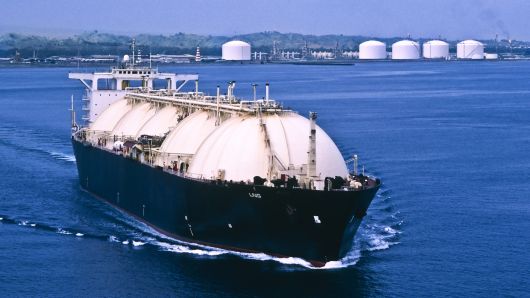U.S. LNG in high demand

LONDON (Bloomberg) — U.S. gas companies at the LNG2019 conference in Shanghai this week have announced deals to sell a combined 4.5 million tons of LNG a year from proposed multi-billion dollar projects. Nearly all of that was sold without a link to the U.S. Henry Hub benchmark, the most- widely traded gas price in the world.
The novel price links for U.S. gas included:
Japan-Korea Marker: Tellurian Inc. agreed to sell Total 1.5 million tons a year from its Driftwood LNG venture in Louisiana linked to Asian spot LNG marker, which has traded as much as $9 above Henry Hub in the past year. Brent oil: NextDecade Corp. will supply Royal Dutch Shell with 1.5 million tons annually, for 20 years, linked to the global crude benchmark, which U.S. exporters in the past argued has no connection with gas fundamentals.
LNG has traditionally been priced against oil, since the gas market lacked a liquid, global benchmark. The rise of U.S. exports, and the ease of pricing against Henry Hub, was a way to break the link with oil, but left costs dominated by factors unique to North America.
Not Willing
“Nobody wants Henry Hub” pricing in Europe, Mark Gyetvay, CEO for Russian LNG developer Novatek, told reporters on the sidelines of the conference. “Most of these people are not willing to take Henry Hub because they can’t hedge it” against European benchmarks.
No global marker has been established amid the robust growth in spot LNG demand and trading, reflecting a desire by buyers and sellers to secure a diversity of pricing options. Trading of JKM futures on the Intercontinental Exchange Inc. grew 10-fold between January 2017 and December 2018, while trading of Dutch Title Transfer Facility futures has grown nearly five times faster than U.S. trading in the past two years.
Europe has long had domestic gas markets that set prices LNG producers are willing to sell against. But that hasn’t been the case in Asia, where gas markets are typically disconnected and regulated by governments.
That’s started to change in the past two years as spot LNG trading in the region increased, bolstering confidence in the JKM price, assessed by S&P Global Platts. Nearly two-thirds of the world’s LNG was bought by Japan, China, South Korea or Taiwan last year, according to the International Group of LNG Importers.
Asian Index
“We don’t believe LNG should continue to trade on an index to something else. It should be buying and selling on an LNG index,” said Meg Gentle, Tellurian’s chief executive officer. “Today JKM is really the market clearing index. Over time there will be additional LNG price points.”
The pricing mechanism that raised eyebrows this week in Shanghai was NextDecade’s Brent-linked deal with Shell. NextDecade CEO Matt Schatzman said he wanted to sell against Brent because his Rio Grande LNG venture will rely on gas that’s a byproduct of oil drilling in the Permian Basin, where output will likely increase along with oil prices.
Total CEO Patrick Pouyanne said he didn’t understand that logic.
“Continuing to price gas linked to oil is somewhat the old world,” Pouyanne said on Wednesday. “I was most surprised to see new contracts linked to Brent, especially from the U.S. Someone will have to explain this to me.”